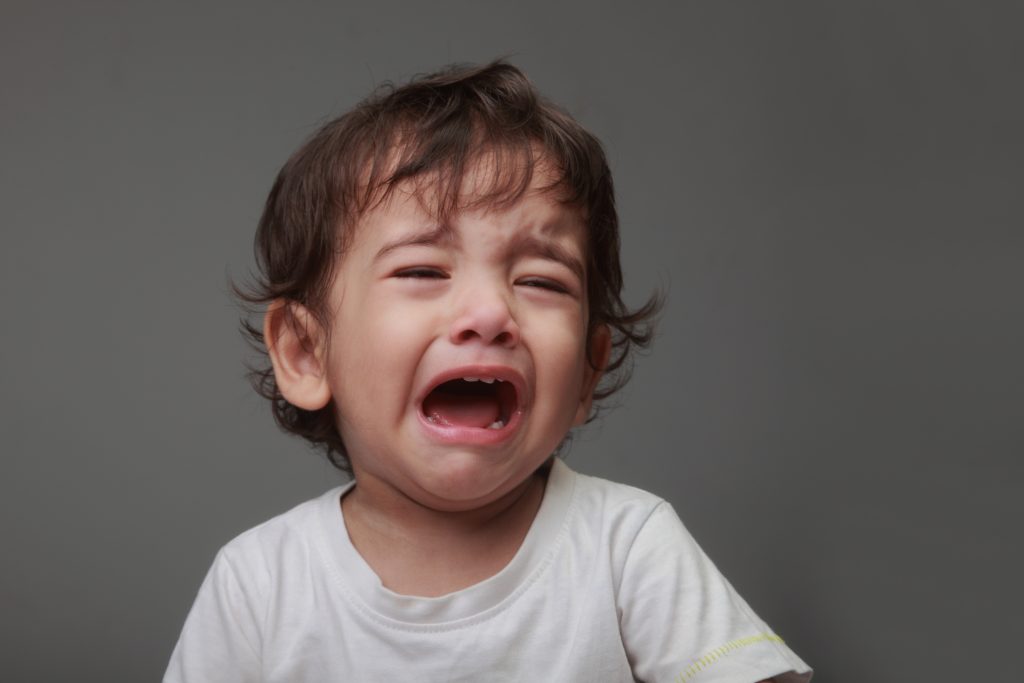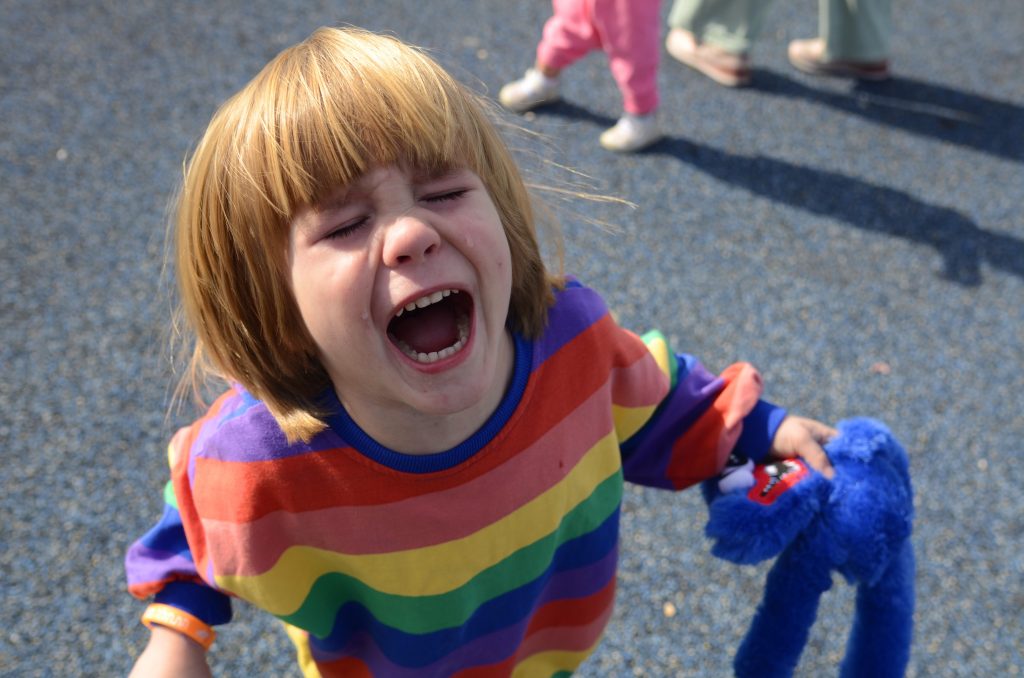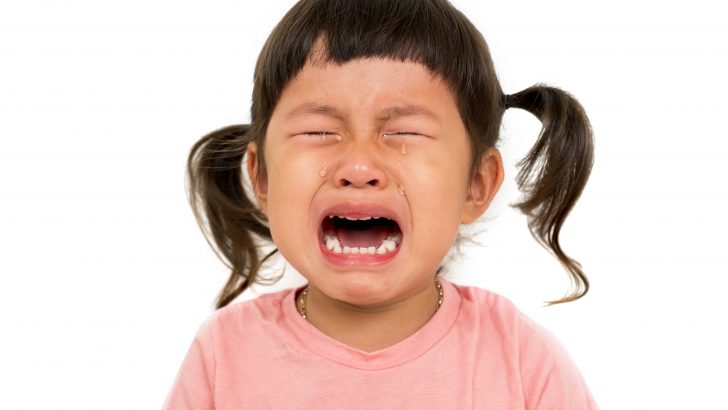Screaming, hysterical crying and uncontrolled behavior in children aged one to three are reactions that every parent encounters at least once.
A hysterical fit is extreme nervous excitement, expressed by children crying, throwing themselves on the floor, screaming uncontrollably and swinging their limbs blindly.
If hysterical seizures occur in children, there’s no point in trying to reach them by conventional methods.
Trying to prove or explain something is useless, because your child, realizing the effectiveness of such an effect on adults, deliberately uses hysteria to get what he wants.
The root cause of infantile hysteria

First of all, the root causes of children’s hysteria lie in the conflict of interests between children and parents, as children mature their own desires, often contrary to the desires of adults.
Typical situations that provoke hysterical attacks are:
- inability to express personal dissatisfaction verbally
- desire to focus attention in any way
- desire to obtain something absolutely necessary, and this moment
- after a painful condition
- unrestrained adult care, with pathological rigidity
- weakly expressed attitude of adults towards the child’s actions
- lack of incentives and sanctions
- interruption of lessons
Hysteria in children under two years of age

Up to the age of 1.5, tantrums are a manifestation of fatigue and overwork.
Up to the age of two, they become attempts to manipulate the child in order to realize personal claims.
At this point, the child already understands the meaning of the word “no” and begins to use it actively, but without getting results, so he turns to a strong protest expressed in hysterical attacks, which stun most parents.
This is the main cause of hysteria for up to two years.
How to react?

Try to prevent it, especially as hysteria often accompanies this kind of preemptive whim: “I want this and that’s it, I’ll never give it away, buy it now.”
If it’s not possible to avoid the crisis, then don’t try to convince, as this only provokes and encourages the continuation.
You can’t force a child to stop hysterics, you can only scare them.
Toughness, perseverance and calm – these are the main criteria for behavior in this situation.
The second principle is not to give up, because in this case, a successful experience can be transferred to later behavior with the parents.
Physical punishment is not a method either, as it can only aggravate the situation.
Ignoring the demands of a child’s strong embrace, as well as reiterating your love for him, can prevent him from exploding.
But if he’s free and angry, you mustn’t hold him back by force, it’s better to let him go.
When the child resists staying with an adult, when the parents have to leave, the child should leave immediately, without delaying the moment of departure.
Hysteria in children aged three and over

This is the period when the child wants to feel adult and even more independent.
A hysterical child at the age of three begins to recognize himself as a person, and often this age is accompanied by unprecedented stubbornness and negativism, and expressed arbitrariness.
A time marked by the phrase: “I must do the opposite of what I’m told”.
Is your child angry?
He can separate himself from it, but without trying to break down, without focusing on the signs of bad behavior.
At the same time, the child shouldn’t feel that anything can be achieved through hysteria.
The best thing to do is to develop the desire to draw attention to something else, e.g. playing together, watching cartoons.
Of course, at the height of hysteria, this is already completely meaningless.
It’s extremely important to learn how to avoid hysterical outbursts, so that the child doesn’t learn manipulation through them.
By the age of four, hysterical fits gradually disappear, and this is because the child is beginning to speak sufficiently and can express dissatisfaction or desire in words.
How to stop hysteria?

The first thing that can help is to think of your child as, say, a caveman.
With all their grunting, shouting and incoherent speech, small children act like primitive people.
To communicate with them in such situations, all you have to do is descend to that level.
So make noise, gesture and speak energetically!
But be careful!
Don’t be angry, and above all, don’t pass on your anger to your child.
Instead, use the following method:
- short sentences
- repetitions (a hundred times)
- energetic tone
- excessive facial expressions and gestures (broad smile, pointing finger, waving)
Follow the fast-food rule.
It’s so simple!
When your child is upset, act like a stubborn salesman – always repeat the “order”, meaning, in this case, what you think the child wants to get, before telling him your “price”.
A child in the throes of hysteria isn’t able to hear what you’re asking (warnings, threats, punishments, explanations, nothing gets through) until he notices that you understand and respect what he means with that hysteria.
So, when your toddler is upset, before you start listing why he needs to calm down and what will happen if he doesn’t, try to describe honestly what you think he wants and feels.
When you speak this childish, energetic language and use the fast-food rule, you can sound like you’ve completely lost your mind.
But children will react much better because you’ve shown them that you hear them and that their feelings are important to you.

Here’s an example.
Your one-and-a-half-year-old is bored and bangs on the door to get out.
He vomits, cries… In short, he becomes hysterical.
Whether you plan to take a walk with him or not, the first thing you need to do is reflect on his message by saying energetically, but cheerfully:
Go outside!
Do you want to go outside with Mommy?
When he realizes that you understand him and he calms down, you can leave without hysteria or offer him another option.
If your child screams because he wants to draw with Mommy’s lipstick instead of a pencil, echo him and express his feelings with the same passion.
Want it!
I want Mommy’s lipstick!
Pay attention to repetition, short sentences and the way you pronounce phrases.
He doesn’t need to be angry, just energetic.
And don’t be surprised if you need five or six repetitions before you get your child’s attention.
You’ll know you’ve made progress when he looks up with surprise, as if to ask:
Did you say something, Mommy?
But then – don’t stop!
When a child is really upset, you may have to repeat this phrase to express his feelings several times so that he realizes that you really understand him and that you’re on his side.
Children aren’t capable of expressing their feelings on their own, and they think we don’t understand them.

This is the most common reason for their hysteria – they believe they’re being misunderstood, and then they communicate that way.
That’s why it’s up to parents to be the child’s voice, and what the child can’t say, say for him.
When he sees that his feelings are important, he’ll be much more willing to cooperate.

